Andrea Macdonald, founder of ideaXme, interviews Robert Bilott, environmental attorney and partner at Taft Stettinius and Hollister LLP and author.
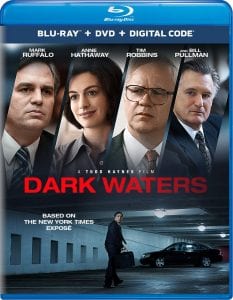
Andrea Macdonald comments:
When you think of environmental justice, many hot-button issues spring to mind, such as climate change, global warming, and pollution. What we don’t, unfortunately, hear enough about, are the people fighting for justice behind the scenes in an attempt to hold large corporations accountable for present, as well as past actions.
Today, I had the pleasure of speaking to one of the world’s leading environmental attorneys, whose inspiring career of exposing some of the world’s largest chemical companies and seeking justice for those affected has now been adapted into an award-winning feature film.
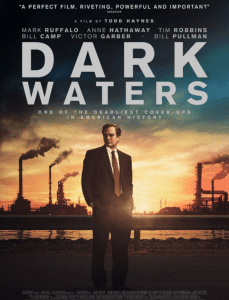
Robert Bilott, Environmental Attorney and Author
Robert Bilott received his law degree from The Ohio State University College of Law, going on to specialize in environmental law, primarily for corporations, at Taft Stettinius & Hollister LLP, where he has been a partner since 1998. That same year, he was contacted by a farmer in West Virginia, setting him off on a 22-year long journey which continues on to this day.
Farmer Wilbur Earl Tennant contacted Bilott, looking for answers as to why his cows, alongside other local animals, were becoming ill and dying. He suspected a nearby landfill was the cause, due to a mysterious white foam contaminating a creek from which the animals drank.
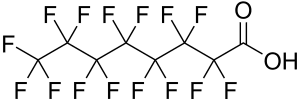
PFOA Chemical
Testing revealed that the water was being contaminated by Perfluorooctanoic Acid, referred to as PFOA and C-8, which is used to make Teflon. Further research uncovered a number of harrowing facts: PFOA was cancerous, and had been contaminating the community’s drinking water for decades.
Exposure One of World’s Largest Chemical Companies
Robert Bilott is also the author of the book Exposure, which chronicles his fight for environmental justice against DuPont. Exposure has now been adapted into the feature film Dark Waters, directed by Todd Haynes and starring Mark Ruffalo, Anne Hathaway, Tim Robbins, and Bill Pullman.
Robert Bilott has received numerous awards throughout his career, including the Right Livelihood Award, which he received for his work exposing a decades-long history of chemical pollution, winning long-sought justice for the victims, and setting a precedent for effective regulation of hazardous substances.
Below, read the full interview transcript. Conversation is lightly edited, with interviewee’s permission, to improve flow.
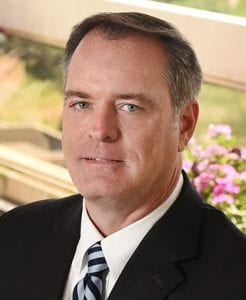
Andrea Macdonald, founder ideaXme [00:03:05] Welcome back to ideaXme, the platform that moves the human story forward. I am Andrea Macdonald, the founder of ideaXme. I’m with:
Robert Bilott, environmental attorney and author [00:03:37] Rob Bilott. I’m an attorney with the law firm Taft Stettinius & Hollister in Cincinnati, Ohio. I’m also an author of the book Exposure, and a proud father to three boys and, happily married.
Andrea Macdonald, founder ideaXme [00:03:56] These interviews talk to professionals in the field, to scientists, to lawyers, but very critically, we also try to involve everyone, the public, in the ideas that move the human story forward, to entertain them and to inform them. Can you take us through the legal process through which you went after one of the biggest chemical companies in the world?
Robert Bilott, environmental attorney and author [00:04:27] Yeah. You know, this was a process that actually stretched out for a long time. Now, I think we’re heading into the 22nd year. So it’s been a long process.
Farmer’s Story Ignited a Historic Case Against One of World’s Largest Chemical Companies
Robert Bilott, environmental attorney and author [00:04:38] It started in 1998 when I was approached by a farmer out in West Virginia trying to get some help to understand why his cows were dying on his farm outside of Parkersburg. That legal case for one family in West Virginia then morphed into a large class action lawsuit for his entire community, some 70,000 people along the Ohio River. A couple years later that then morphed into a series of thousands of personal injury cases and trials. Now, I’m currently working on cases representing different entities all over the country, injured parties, including individual states, water providers, and now I’m also trying to bring a class action on behalf of everyone in the United States that has a certain class of chemicals in their blood to get adequate studies and testing done.
Andrea Macdonald, founder ideaXme [00:05:47] Could you talk to us about the particular chemical and tell us the four different names for the same chemical? Also, explain how you came into contact with the farmer that launched this global campaign and legal mission?
Robert Bilott, environmental attorney and author [00:06:05] Sure. The chemical that’s really been at the heart of this litigation over the last several decades is a chemical called PFOA, which stands for, it’s sort of a mouthful, Perfluorooctanoic Acid, which was also called C-8 because it’s a chemical that has eight carbons attached to a flourine, also called FC-143 and also called APFO. Just a lot of different names for the same chemical.
Robert Bilott, environmental attorney and author [00:06:36] It’s a completely man made chemical that came out right after World War II and is part of a larger family of man made chemicals that we now may hear referred to as PFAS, which stands for Per and Polyfluoroalkyl Substances, another huge mouthful. There are hundreds, if not thousands of chemicals in that class. PFOA is the one that really was at the heart of our litigation for many years and that started with my meeting with the farmer you mentioned, Wilbur Tennant in West Virginia.
Robert Bilott, environmental attorney and author [00:07:17] He reached out to me one day. I got a telephone call in my office back in 1998 and this gentleman on the other end of the line started rattling on about cows dying on his property and it was not the kind of case that I typically handled at my law firm where we did a lot of corporate defense work for big companies, but then he blurted out that he had gotten my name from my grandmother who lived in the area. My entire mother’s family grew up outside Parkersburg. So, when he mentioned that connection, that he had gotten my name from a referral through my grandmother, that changed everything. I listened and invited him up to come show me what he had. I was hoping that we might be able to help him. After all, this was somebody from what I considered my hometown, my family’s hometown.
Andrea Macdonald, founder ideaXme [00:08:11] Can you take us through what “he had” and how this chemical seeped into his land? Also, what had he done in order to build a case? What was the evidence that he had gathered, keeping in mind that hopefully one day he would come across somebody like you to “defend” him?
Robert Bilott, environmental attorney and author [00:08:34] When he first reached out to me, when he placed that phone call in 1998, he really had no idea (neither did I) what chemical or what material was causing the problems. It wouldn’t be for another year or two before we even discovered this chemical PFOA being in the water that his cows were drinking. So, when he first reached out to me, really what he was seeing was that his cows were drinking from a creek that ran through his property and at one end of the creek was a large landfill where white foaming material was being discharged. So you could see his cows drinking this white foaming water. They were getting sick, they were getting tumors, blackened teeth and dropping dead. Deer, birds, fish and wildlife in the area were also getting sick. So he had no idea what was causing the problem, but he was pretty sure it was something in that water.
Farmer Gathers Evidence Against DuPont Chemical Company
Robert Bilott, environmental attorney and author [00:09:34] When he came up to meet with me, he brought videotapes. He couldn’t really get anybody locally to listen to him, to talk to him. The owner of the landfill (DuPont) was a huge employer in town. Nobody really wanted to get involved. So he had gone out himself with his own camcorder. These were the days of the handheld camcorders. He went out and started videotaping what he was seeing, beginning around 1995. So by the time he met me, he had dozens of videotapes with hours and hours of footage including himself getting in and dissecting these animals to see what was going on in the organs inside. He had done his best to try to document what he was seeing on his own in hopes that somebody someday would finally pay attention and listen.
Andrea Macdonald, founder ideaXme [00:10:28] This wasn’t just one case that you worked on. There were a collection of cases and you’re still working on this issue (now at national level). Can you take us through the turning points? I’ve just read your book and it seems to me that there were some absolutely critical turning points, for example, an attempted gag order on you from speaking publicly on this subject.
Andrea Macdonald, founder ideaXme [00:11:02] Could you take us through the critical turning points?
Robert Bilott, environmental attorney and author [00:11:07]. It was a big decision for our law firm to go after a big chemical company in town which provided jobs. Moreover, it was one of the largest chemical companies in the world. That chemical company, DuPont, owned the landfill that seemed to be causing the problems.
The Environmental Lawyer Exposes Poisonous Chemical
Robert Bilott, environmental attorney and author [00:11:24] After we had figured out what was going on with Mr. Tennant and his property and were able to resolve that case for him, we had really at that point uncovered the fact that this was a chemical contamination that was impacting far beyond just Mr. Tennant and his property, the farm in West Virginia. This was something that was in the drinking water of the entire surrounding community and likely had been there for decades. So, both I and the firm had to decide how to address this massive public health threat. I eventually decided to put a letter together. This was in March of 2001 to disclose this information to the federal and state public health agencies in the area to try to get them to do something about this. So, I took that step and, as you indicated, the company fought back by trying to go get a gag order to prevent me from disclosing this information to the public and from discussing it with the environmental protection agencies. Luckily, the court denied that order and we were allowed to proceed.
Robert Bilott, environmental attorney and author [00:12:39] Then after that, another pivotal point was when the community found out that this chemical was in their drinking water. They came to us and asked us, how can we get rid of this? How can we get it out of our water and find out what it’s doing to us? At that point, we made the decision to bring a class action against this huge chemical company, DuPont, that was in 2001. So, that was a real pivotal turning point. We could have stopped after we had taken on the case, but we decided this was a public health threat and something we needed to address and frankly, we might have been the only people that had seen this information within the company’s internal documents. So, we really felt we had an obligation to do that. Then that case finally settled in 2004.
Robert Bilott, environmental attorney and author [00:13:27] Once again, we could have decided to simply distribute the money through the settlement and walk away, but we decided to do something kind of unique. We decided to use the settlement funds to set up a massive human health study, one of the largest ever done, which then stretched over the next seven years, where we weren’t sure what the outcome would be. We were pretty confident it would confirm the various health effects we were seeing in DuPont’s documents, but, nobody had ever done this before. So we took that step in 2005 and set up this massive health study.
$670.7 Million Settlement and Then We Decided to Keep Going
Robert Bilott, environmental attorney and author [00:14:06] In 2012, the final results of that study came out confirming the chemical in the water caused various diseases, including cancer. Then once again, we could have stopped it, but at that point we had thousands of people who had these diseases, including cancers. So we agreed in 2013 to lead a new phase of litigation to try to get compensation for those people. That involved some 3,500 individual cases. We started taking those to trial and then in 2017 we were able to settle those for some $670.7 million.
Robert Bilott, environmental attorney and author [00:14:44] And again, we could have stopped at that point, but we made the decision to then try to help others who had been impacted by these chemicals all over the country and all over the world, including launching this new case I mentioned, which is seeking to bring a case on behalf of everyone in the country now who has, not only PFOA, but the related PFAS chemicals in their blood to try to get the science confirmed about what these chemicals are doing to us.
Robert Bilott, environmental attorney and author [00:15:11] There were a number of pivotal turning points throughout this process. I’m proud to be able to say that we, I think, made the right decisions, to keep pushing forward each time and to try to keep making sure we could do what we could to address what has become a massive public health threat.
Fight Continues Against Chemical Company
Andrea Macdonald, founder ideaXme [00:15:34] It is extraordinary to me, hearing of the 1962 study on rats and then later the study in 1978 on monkeys and then all the additional evidence that you gathered which proved that DuPont was very much aware of the negative health impacts of this chemical, that Teflon is still operating. I went on their website today and they have recipes and all sorts of things appealing to the consumer. I went on to the DuPont website and they speak of being very pro-sustainability and for the community. It is so difficult to get one’s head around that. They have paid up $670.7 million and the fight continues. Yet they’re still operating as if none of this has happened.
Global Collaboration To Fight Chemical Company
Andrea Macdonald, founder ideaXme [00:16:42] Do you have any plans to collaborate, or are you already collaborating with other lawyers globally to go after DuPont and Teflon beyond the USA?
Robert Bilott, environmental attorney and author [00:16:55] Yeah, we’ve begun working with different lawyers across the United States and beyond.
Robert Bilott, environmental attorney and author [00:17:02] We’re working with different folks that are dealing with the same problem and trying to address the ever expanding impacts from this class of chemicals. You may hear them referred to as emerging contaminants. The only thing emerging is the public’s awareness that these chemicals are out there. They’ve been out there for decades and unfortunately people are just now realizing the extent of the contamination in the water, in our blood and in the environment. We’re trying our best to work with as many different groups, not just lawyers in the United States, but also lawyers in other countries and community groups in other countries and advocates, researchers, scientists and regulators. Just anybody that’s trying to learn about these chemicals, where they are, and what products they’ve been used in. So, it’s an ongoing effort and it’s expanding globally.
Andrea Macdonald, founder ideaXme [00:18:20] Could you talk briefly about how you discovered it was this chemical and the “honor system” (where companies police themselves) for new chemicals?
Robert Bilott, environmental attorney and author [00:18:33] Sure.
Decades of Corruption and Cover-Ups by Dupont Chemical Company
Robert Bilott, environmental attorney and author [00:18:36] We were handling the case for Mr. Tennant and his family, the original case that we were working on back in 1998 and 1999. We were digging through documents and at that point the company DuPont that owned the landfill near his farm was only giving us documents relating to regulated hazardous listed toxic materials in the landfill and we weren’t finding much. So I had gone to court and asked that the court order DuPont to turn over documents relating to all of the materials it was sending to that landfill and making at its plant down the river, not just those that were listed or regulated.
Robert Bilott, environmental attorney and author [00:19:20] When we started pouring through the hundreds of thousands of pages of documents we finally got from the company about all of the materials, I stumbled across a letter one day that mentioned this chemical, APFO or PFOA. I’d never heard of it and I couldn’t find anything at the time, even telling me what it was, but there were a lot of internal DuPont documents talking about it. What we found out was, this was a chemical that had been invented right after World War II by The 3M Company. 3M had been selling it to DuPont since as early as 1951. DuPont was using it to make Teflon. So they were using lots and lots of this material for many decades and a lot of it was being emitted out into the environment with no restrictions whatsoever. You may wonder, like you say, how can that happen? Aren’t they regulated, aren’t they restricted? In the United States, the Environmental Protection Agency (EPA), that federal agency, didn’t even come into existence until 1970 and some of the first federal laws in the United States regulating new chemicals coming out on the market came out 1976. This is decades after this chemical came on the market and DuPont had already been using it.
Robert Bilott, environmental attorney and author [00:20:37] In the U.S, when those laws came out, they really focussed on new chemicals coming out into the environment. So what about these existing chemicals like PFOA? Well, the law essentially said that it was up to the companies that were making and using those chemicals to alert the U.S. Environmental Protection Agency (EPA) if they found any evidence indicating the chemical might present a substantial risk of harm to human health or the environment. Even though we were seeing all kinds of internal studies suggesting just that, that these chemicals were harmful and were presenting a threat, unfortunately, the company was making the decision that it did not need to disclose any of that to the EPA. So what happened is this went essentially unnoticed by the agencies for decades.
Critical Flaws of U.S Chemical Laws
Robert Bilott, environmental attorney and author [00:21:31] When we finally revealed it to the U.S. EPA in 2001 and started sending them these documents, they ended up suing DuPont in 2004, claiming that this is information that should have been sent to them and if it was sent a long time ago, they might have begun being able to regulate these chemicals decades ago. So it was a real flaw in the system here in the way in which chemicals were identified and regulated. This was used as an example of some of the problems with our system and led to some revisions and beefing up of the U.S. chemical laws in 2016.
Andrea Macdonald, founder ideaXme [00:22:16] How do U.S. chemical laws compare with the chemical laws of the rest of the world? Are there any main comparisons that you like to do?
Robert Bilott, environmental attorney and author [00:22:28] I’d say a critical distinction in the US and in our U.S. legal system, is if you’ve been exposed to a toxic chemical in your water, for example, under our system, the person who’s been exposed is told that they have the burden to bring in the science to prove that it’s that chemical which is actually causing them harm. The company that’s emitted the chemical or put it into their water or put it into their blood is told they don’t have the burden to prove anything. So it’s very difficult for those who are exposed to come in and marshal that kind of scientific evidence to prove that these chemicals are causing harm when that often requires massive epidemiology and human health studies involving tens of thousands of people. So it’s incredibly difficult. It’s impossible for the people who are exposed to meet that kind of burden.
Robert Bilott, environmental attorney and author [00:23:33] Whereas other systems, for example, in Europe, are based more on what we’d call a precautionary principle, where you take action to protect people from the exposure before you have ironclad, 100 percent proof that this chemical is killing them or making them sick. But in the US, unfortunately, the system is sort of reversed and the exposed people have the burden to do that. The situation we have with PFOA where we set up this independent panel that did the science and did finally confirm the health effects was one of the only times the exposed people have been able to meet that legal burden.
Andrea Macdonald, founder ideaXme [00:24:23] A lot of this is about legal strategy and out-maneuvering a massive organization that has huge resources and some of the best legal minds. Can you talk to us a little bit about the judges?
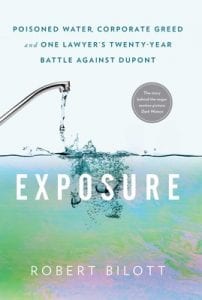
Robert Bilott, environmental attorney and author [00:24:54] Sure. One of the things I try to explore and give folks a little more detail on in my book, Exposure is just that. The legal maneuvering and the strategies is almost like the chess game, you know. One move forward, another move backward. We were fortunate to have a series of really fantastic judges and lawyers involved, beginning with our federal court judge in our first case with Mr. Tennant in West Virginia. Then a judge in our class action case in West Virginia who was able to see through a lot of arguments and get right to the meat of things and make sure that now we were able to get to the truth. A series of additional judges – through our personal injury cases in Ohio for thousands of people who, again, were able to make sure the truth came out and that documents weren’t kept secret and that people were allowed to have their day in court and allowed to finally make this information available to the public.
Robert Bilott, environmental attorney and author [00:26:17] One thing that’s definitely just tremendous about the U.S. legal system is the ability for folks when they don’t have recourse, when the government isn’t taking action and isn’t moving quickly enough to protect people, at least we have this legal system where people can go into court and we can get orders to require clean water. We can get orders to require medical studies and testing and get people compensated when there’s no other way to do it.
Andrea Macdonald, founder ideaXme [00:26:52] Could you name some of those judges?
Andrea Macdonald, founder ideaXme [00:27:00] Yes. Judge Goodwin?
Robert Bilott, environmental attorney and author [00:27:02] Correct. Judge Goodwin was in the original case in federal court in West Virginia for Mr. Tennant. There was Judge Hill who handled our case in the class action case and Judge Sargus, who’s been overseeing the personal injury cases in Ohio.
Andrea Macdonald, founder ideaXme [00:27:25] Speaking of names, one of the things that really jumped out at me while reading the book was clearly the senior management at DuPont were driving this. It could have escaped me, but you don’t seem to name any of the senior management. Is that a deliberate thing?
Robert Bilott, environmental attorney and author [00:27:54] No. In fact, there were several folks involved and I believe I’ve mentioned a couple of them in the book.
Robert Bilott, environmental attorney and author [00:28:02] For example, Chad Holliday, who was the CEO of DuPont at the time. We had the sort of unusual ability to actually take his deposition at one point where I was able to show him all of the internal studies that frankly, I think had been withheld from him for many years.
Robert Bilott, environmental attorney and author [00:28:23] There were a number of folks at the corporate level, not only the business people, but you had scientists within the company who were also trying to get the business to do the right thing. You had lawyers within the company trying to have the company do the right thing as well.
Robert Bilott’s Legal Battle Against Chemical Company Continues
Andrea Macdonald, founder ideaXme [00:28:48] So, looking forward. What is the next stage of this campaign?
Robert Bilott, environmental attorney and author [00:29:01] Well, right now, I am trying to pursue this case, seeking a nationwide class action to try to do essentially what was done with PFOA in one community along the Ohio River. There, we set up these massive human health studies to confirm through independent scientists what health effects are caused by PFOA when you drink it in the water. We’re trying to take that model and expand it nationally where we do nationwide human health studies and testing to show the contamination of a broader group of chemicals, not just PFOA, but all of these related chemicals. Things like PFOS, which has been used in firefighting foam has now been identified as a source of contamination in drinking water all over the planet.
Robert Bilott, environmental attorney and author [00:30:01] What we’re hearing, unfortunately as we find this contamination from PFOA and PFOS, some of the replacement chemicals like GenX that we’re hearing from the companies, there’s insufficient data to show what these do to people. That’s almost the same thing we heard 20 years ago when we first started digging into PFOA. So what I’m trying to do is take this model that we were able to use for PFOA to confirm those health effects, expand on a national basis and look at this broader group of chemicals and confirm once and for all what these chemicals can actually do to everybody and have it confirmed by independent scientists that people can’t keep disputing and fighting over.
You Shouldn’t Have to go to Court For Clean Water
Robert Bilott, environmental attorney and author [00:30:50] My goal is, frankly, to try to find a way to end all of this litigation. I’m a lawyer, but I’ll be the first one to tell you, people shouldn’t have to go into court and fight legal battles for 20 years to get clean water and make sure their blood isn’t poisoned, and their babies aren’t being born pre-polluted with chemicals and then be told we have no idea what will happen to your baby 10 years from now. People shouldn’t have to go into court to do that. But unfortunately, at this point that’s really the only option we’re seeing in the United States as the regulatory process, the legislative process, the political process keeps getting dragged on and on and on.
Andrea Macdonald, founder ideaXme [00:31:40] Public engagements in your
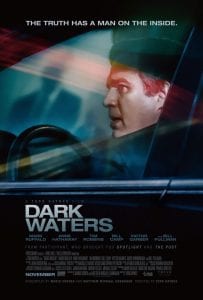
crusade against DuPont and Teflon have been extremely important. It was the New York Times Magazine article in 2016 by Nathaniel Rich and the movie Dark Waters, starring Mark Ruffalo, Anne Hathaway and Tim Robbins, which will also raise awareness amongst the public.
Andrea Macdonald, founder ideaXme [00:32:14] For the public who are listening, what would you like them to do? Obviously, these sorts of things, your book, the movie, the article increases knowledge and empowers people. What would you actually like people to do to help your cause? Is there anything that they can do to help you?
Educating and Raising Awareness To Fight For Clean Water
Robert Bilott, environmental attorney and author [00:32:37] Absolutely. In fact, I think you hit on something critical, and that is education and awareness. I’ve been trying now for several decades to do everything I can to get information out to people, to get data out there so that people can start to make their own choices. None of us had a choice to be exposed to these chemicals. None of us knew that these exposures were even happening. We weren’t told what products these chemicals were even in. We had no idea whether we were drinking this stuff or not. I think in order for people to begin having any kind of power to stop these exposures and to make things different, they need to know, first of all that these chemicals exist, where they are, how did this happen, what can we do to stop it, what companies are moving away from these chemicals? What can we do to raise awareness of this?
Robert Bilott, environmental attorney and author [00:33:41] It’s been critically important that we found these ways to get this information out. I can’t thank the folks enough at the Participant production company and Mark Ruffalo, Todd Haynes, the folks that put the film together, Dark Waters to get this story out to a broader audience. Also, the folks who put the documentary together, The Devil We Know, which is out there with the real people involved so you can see their story. I put the book together for the same purpose, to make information available to people so they can understand, how did this happen? Because I think only by knowing the history and knowing how it happened can we make things different and take steps to make a change. I’m hoping that through the book, the documentary, the film, if people are able to see, read or listen to the story, they will understand, we can make a difference. One person like Wilbur (Earl) Tennant or Joe Kiger standing up, speaking out and saying, “This is wrong. This needs to change,” shows we can do it. People can actually make this change. We can actually fix these systems.
Robert Bilott, environmental attorney and author [00:34:59] There are programs and coalitions being formed, particularly with the roll out of the movie Dark Waters. A website that’s been created called fightforeverchemicals.com, for example where different organizations and community groups are trying to make information available to people to tell them the products where these chemicals have been used in the past and the companies that are switching away from these chemicals. They tell people the laws or regulations that are being proposed that you could help support or things you can do on an individual basis or on a community basis. Hopefully, all of this information inspires people and really makes it clear to folks, every one of us, even acting individually or acting in our own community can make a huge difference.
Human Connections Helped to Move Legal Cases Forward
Andrea Macdonald, founder ideaXme [00:35:59] You are a person that can function at the most extreme levels in terms of pressure. You’re known as one of the world’s best environmental lawyers. Human connection has been a catalyst for you to move forward with this campaign, this initiative, this crusade. Could you talk to us about the emotional trigger points from your feelings for the community you first started working with right the way through to how emotional you felt at one of the last major trials?
Robert Bilott, environmental attorney and author [00:37:09] When Wilbur Tennant first called me and referenced the fact he’d gotten my name from my grandmother, that really resonated with me. I grew up in a relatively small family. It was just my mom, my dad, my sister Beth, who’s one year older than me and me. No uncles, aunts, cousins or anything like that. We had a fairly small family. My dad was in the military. We moved around a lot. But the one real constant in my childhood growing up was going to my mom’s hometown in Parkersburg, where we spent holidays and family gatherings, so that was a real emotional trigger for me when Wilbur Tennant mentioned that he’d gotten my name from my grandmother and he was from Parkersburg. I think that was critical to really peaking my interest in wanting to be able to help these folks.
Robert Bilott, environmental attorney and author [00:38:07] Meeting Wilbur’s family and seeing what was going on at that property, seeing the devastation that was happening on his land and to, what he considered his family members, these animals and to his children as well was really impactful for me.
Robert Bilott, environmental attorney and author [00:38:25] Then there’s the connections with the folks within my firm. My boss and one of my partners who was the head of our group at the time, Tom Terp, and one of my other colleagues there, Kim Burke. They were really critical in supporting me and agreeing to let us take these cases and move them forward for many years through a very severe economic crisis. There was a lot of uncertainty while we were waiting for the scientific results, for example, during a massive economic meltdown. So it was critical to have that kind of support within the firm and with those folks.
Robert Bilott, environmental attorney and author [00:39:11] I met the people who were impacted by this contamination, the people in that community who came forward with cancer claims or ulcerative colitis or other severe, incapacitating illness, listened to their stories and saw what was happening to them individually. When we were at trial, as you indicated, we finally got to trial and were able to see those stories resonate within the faces of the jurors and to see that story coming out and seeing the emotional, real person impact these things had. This was no longer some abstract business decision, legal issue or scientific issue. These were real people with real suffering and the jury saw that.
Robert Bilott, environmental attorney and author [00:40:06] That was one of the things that really attracted me to the folks at Participant and Mark Ruffalo in particular, who reached out and was just incredibly passionate about wanting to bring this story to a broader audience in a way that really touched people with the real human impact that something like this has. I think they did a tremendous job doing it. It’s something I really wanted to do in the book as well, not just give the readers an insight into the strategy, the chess game, the legal maneuvering back and forth and the science, but the impact this had on the real people. So you’ll see discussion about Mr. Tennant and his family and his children and his wife. You’ll see discussion about Sue Bailey and Karen Robinson, the women who had children during the Teflon problem at the facility. You’ll see Ken Wamsley, who was one of the workers at the plant and just the tremendous, devastating impact that this had on his life.
Robert Bilott, environmental attorney and author [00:41:11] So, I think all of those human impacts were incredibly important. I’m a strong believer that you’ve got to reach people on an emotional level, too. You see that in the film and I talk about it in the book. One instance in particular, where I finally got the chance to sit down with the CEO of DuPont in a deposition. My main purpose in doing that was I wanted to reach him as a person, to show him these studies and just to show him what was really in his files, and just to look at him eye to eye and see, does he get it? Look at what’s really happening here to people! I think that was effective and we were able to communicate in that way. So, yes, there were a lot of pivotal, critical human stories involved throughout this.
Andrea Macdonald, founder ideaXme [00:42:18] You’ve clearly met and continue to meet incredible people. Is there one individual that you would like to meet and haven’t been able to so far who could help with moving this to the next level, possibly onto a global level?
Robert Bilott, environmental attorney and author [00:42:36] It’s hard to name just one, but I would really like to be able to sit down with one of the current CEOs of either DuPont, Chemours (a chemical company founded in 2015 as a spin-off from DuPont) or 3M and just again, try to understand how it is that despite all of the science that now exists, all of the studies that have been done, all of the people who’ve been directly impacted, there can still be public statements being made that there’s insufficient science to suggest there’s any health threat here and that regulations aren’t necessary or that we just don’t know enough and people should continue to use these chemicals. I’d really like to have an opportunity to have a discussion about that.
Andrea Macdonald, founder ideaXme [00:43:29] As a final question for all those budding environmental lawyers out there. Do you have any advice?
Robert Bilott, environmental attorney and author [00:43:39] Yeah. You never know where your career path is going to lead you. Take a risk. Go outside your comfort zone. I think that’s one of the things that I’ve learned through this process. I started off at a law firm and actually I’m still there, it’ll be 30 years this year. But the law firm was known as being more of what you would call a corporate defense firm, a firm that represented a lot of big companies. I would never have guessed that I would end up handling the kind of cases I’ve handled and doing the kind of thing that I’m doing. But, there are points in time where you make a decision to take a risk, maybe do something that’s a little uncomfortable, but that’s the only way things change, by taking a risk and stepping outside your comfort zone and seeing what happens.
Andrea Macdonald, founder ideaXme [00:44:46] Robert Bilott, “the lawyer who became DuPont’s worst nightmare”; to quote The New York Times Magazine. Thank you very much for your time. It’s been an absolute pleasure.
Robert Bilott, environmental attorney and author [00:44:58] Thank you so much. It was a real pleasure to talk with you.
This interview is in American English
Full movie credits for Dark Waters

Credits: Andrea Macdonald interview video, text, and audio.
If you liked this interview, be sure to check out our interview about possible effects that Covid-19 may have on climate change!
Follow ideaXme on Twitter: @ideaxm
On Instagram: @ideaxme
On YouTube: ideaxme
Find ideaXme across the internet including on iTunes, SoundCloud, Radio Public, TuneIn Radio, I Heart Radio, Google Podcasts, Spotify and more.
ideaXme is a global podcast, creator series and mentor programme. Our mission: Move the human story forward!™ ideaXme Ltd.

